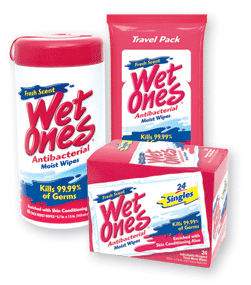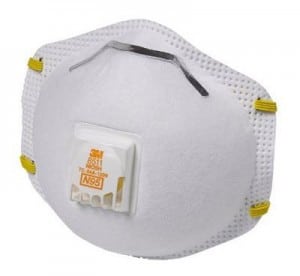72-Hour Survival Kit List (Build Your Own)

Are You Prepared?
A great place to start is by getting 72-hour kits ready for you and your family. This is something that everyone can and should do.
If your budget is tight, prioritize the items, look for deals, and just get a little bit at a time. Do what you can! Anything is better than nothing.
I have been working on completing my 72-hour kits this month. I’m not a survival expert, but I do think it is important, I am learning more as I go, and I want to inspire others to do it too. Join me!
Emergency Survival Kit List
These supplies will come in handy during an emergency or an outage. You may need to survive on your own for a little while before help arrives. Be prepared by having your own food, water, and other supplies on hand to get through at least 72 hours.
Keep kits in your home and a basic kit in your vehicles too. You don’t want to get stranded in your car and have no supplies!
Each family or individual kit should be customized to meet specific needs and include important family documents. Take a look at the recommended supplies (or download the 72-hour kit list printable here)…
Basic Essentials
- Water – one gallon of water per person per day, for drinking and sanitation. (Water pouches, boxes, and bottled water can be great for this, but be sure to store in a cool, dark place and keep track of expiration dates. You can also include a water filter and a way to boil water. When storing water for long-term, I like to use high-quality containers and add some water preserver drops too.)
- Food – at least a three-day supply of non-perishable food. (I prefer a shelf-life of at least 1 year. Food bars and some just-add-water meals are nice. Ready-to-eat canned foods, protein bars, cereal, dried fruits, crackers, peanut butter, granola can be good options too. Store food that your family will eat!)
- Battery-powered or hand-crank radio and an NOAA Weather Radio with tone alert, and extra batteries for both.
- Flashlight and extra batteries. (I have a few wind-up flashlights and a solar-powered light too. Not dependent on batteries!)
- Whistle to signal for help.
- Infant formula and diapers, if you have an infant. (I like to keep extra baby wipes on hand too.)
- Moist towelettes, garbage bags and plastic ties for personal sanitation. (You might also consider a portable toilet, shovel, and female urination device to go along with that.)
- Plastic sheeting and duct tape to shelter-in-place. (Use to create a smaller space for warmth, to quarantine, shelter, and more.)
- Wrench or pliers to turn off utilities. (I like the idea of this all-in-one emergency tool.)
- Can opener for food, if kit contains canned food. (If you have a lot of cans in your food storage as I do, you might want TWO heavy duty can openers – one as a backup!)
- Local maps
- Cell phone and charger or solar charger
Clothing and Bedding
If you live in a cold weather climate, you must think about warmth. It is possible that the power will be out and you will not have heat. You will want to include one complete change of warm clothing and shoes per person:

- Jacket or coat
- Long pants
- Long sleeve shirt
- Sturdy shoes
- Hat
- Gloves (for warmth, but also work gloves and disposable gloves for protection)
- Sleeping bag or warm blanket for each person
The items do not need to be fancy. Get them from a second-hand store if you want to!
As a family with growing children, I think it is a great idea to get the clothing for the kids one or two sizes up and keep it in their 72-hour kit until Christmas. Then give them the clothing from the 72-hour kit as a gift and replenish the kit with the next size up. Great way to keep your 72-hour kit clothing up-to-date!
Additional Supplies
- Emergency reference materials, such as a first aid book or a print out of the information on www.ready.gov. (Many first aid kits come with a reference pamphlet too.)
- Rain gear (I have a few emergency ponchos in my kit because they are compact and easy to store.)
- Mess kits, paper cups, plates, and plastic utensils
- Cash (in small bills) or traveler’s checks, change
- Paper towels
- Fire Extinguisher
- Tent (Emergency tube tents are very basic but also lightweight and compact.)
- Compass
- Matches in a waterproof container (I also like to keep some InstaFire in the kits. Cool stuff.)
- Signal flare (One of my kits came with some industrial glow sticks, which I believe are for this purpose.)
- Paper, pencil
- Personal hygiene items including feminine supplies (For a reusable and compact solution, you might consider something like the DivaCup.)
- Disinfectant
- Household chlorine bleach – You can use bleach as a disinfectant (diluted nine parts water to one part bleach), or in an emergency, you can also use it to treat water. Use 16 drops of regular household liquid bleach per gallon of water. Do not use scented, color safe or bleaches with added cleaners.
- Prescription medications and glasses
- Entertainment – small games, toys, coloring supplies, etc.
- Pet food and supplies, if needed
- Medicine dropper
- Important Family Documents such as copies of insurance policies, identification and bank account records in a waterproof, portable container
There are many more items that you may want to keep in your personal kit, just keep shelf life and portability in mind.
Storage
Pack the items in resealable plastic bags to help keep them waterproof. Then keep your 72-hour kits in a designated area inside portable containers, such as large buckets, backpacks, bins, or sturdy bags.
Maintain them by checking expiration dates and contents semi-annually or annually. (I keep a little list of the items that expire and the dates on a note on the outside of my bag so I can check it easily.)
Want to build your 72-hour survival kit even faster?
You can buy pre-packaged 72-hour kits! There are lots and lots of options which contain many of the recommended items and they are available in a wide price range too. You may only need to add a few more things to complete it for your family.
Consider what you already have and price out individual items to be sure it is a good value for you. Here are some places to find pre-done kits:
Update and Maintain
If you are all prepared, way to go! Keep maintaining, adding to your food storage, and updating as needed. It’s just as important to maintain your kit as it is to build it.
Preparedness supplies can honestly make great gifts too! It’s a gift that could save someones life one day! Peace of mind and security are valuable, indeed.
The recommended 72-hour kit checklist is from www.Ready.gov.

Comments
Leave a Reply
Report a Problem
Please select the problem you are facing with this deal:
- Price Increased
- Price Decreased
- No longer available
- Expired
- Link doesn't work
- Suggestion
- Compliment
- Other
Add more details:
Thank you for your feedback. We really appreciate it.
Enter your email address if you would like
to receive a follow up.
Please Try Again
Thanks for providing the email address.
We will reach out to you as soon as possible.




































I love having all this great information in one place! Thanks for the printable check list too!
You’re welcome, Cathy!